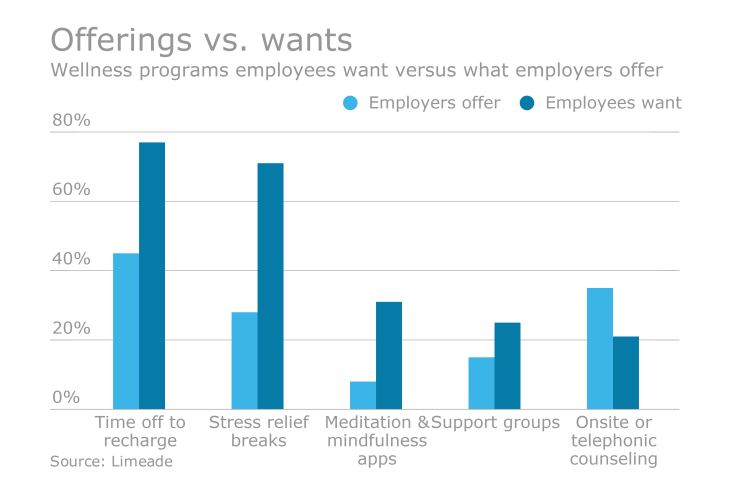Workplace wellness is more than a buzzword; it’s a necessity in today’s workplace. Wellness initiatives don’t just improve employee well-being — they also boost talent acquisition, employee performance and retention. But to achieve these benefits, company culture needs to support wellness programs.
They can’t be successful on their own — so how do you develop wellness programs as an integral part of your company culture?

Here are a few ways to make employee wellness a cultural win:
Define goals. Everything in business starts with a goal. The company mission, vision and values drive your goals, which dictate what work to do and how to do it. Goals are the roots of company culture. When everything is consistently connected to the mission and business strategy, you can grow a strong company culture and shape a supportive work environment.
Like your business, if your wellness program lacks goals, it’s disjointed from the rest of the culture. So what’s the program goal? What do you want employees to strive for? How do these goals connect linearly to company goals and culture? When you have the answers, write them down and let these goals guide your approach to employee wellness. Then, share and explain the objectives with employees.
If employees don’t know the company mission and cultural values, they can’t know how wellness programs reinforce them. A
Without this connection and context, employees can’t be motivated to engage. Show employees you care and that what they strive for as individuals — meaning, well-being, success and connection — matters to the success of the business.
Ask employees what they want. For the best results, wellness programs should focus on employee wants and needs. But many employers miss this. A
What do your employees want from a wellness program? What would help improve their overall well-being? Are they stressed? Do they need financial support? More sleep? Do a quick poll to see what types of activities and initiatives would be the most beneficial to your employees and their well-being.
Asking employees what they want shows that you value their opinions and care about their well-being, which boosts engagement in the program and at work. In fact, the Quantum Workplace and Limeade survey found that respondents were 38% more engaged and 18% more likely to go the extra mile when they felt their employers cared about their well-being.
Make it easy. Organizations launch wellness programs with the best intentions. But if they’re not backed by a supportive company culture, they can stress employees out. Well-meaning wellness initiatives can feel more like a burden than a benefit if they’re seen as a complicated series of disconnected tasks.
When programs are simple, employees are more likely to engage. A 2014
Incorporate activities and initiatives that inspire employees to jump in. Tie it all together with simple integrations and connections to the benefits, programs, HR platforms and apps you already use. That way, employees can easily access and share information about everything related to their health, well-being and performance.
Get everyone involved. Leaders at all levels serve as the ambassadors of company culture. Employees “look up” for their cues to what’s important (and what’s rewarded) in the workplace. Highly visible leaders should promote participation in wellness programs and participate themselves.
"Highly visible leaders should promote participation in wellness programs and participate themselves."
Employees want to know the company culture supports their wellness efforts and goals. The Aon Hewitt survey found that 53% of millennial employees said they were open to their direct manager playing an active role in encouraging them to get and stay healthy.
When leadership is involved, employees at every level internalize the culture of well-being your organization supports. They’ll be motivated to participate in wellness initiatives and therefore, better manage their personal well-being.
How does your company culture support employee wellness? Share your thoughts in the comments below.





